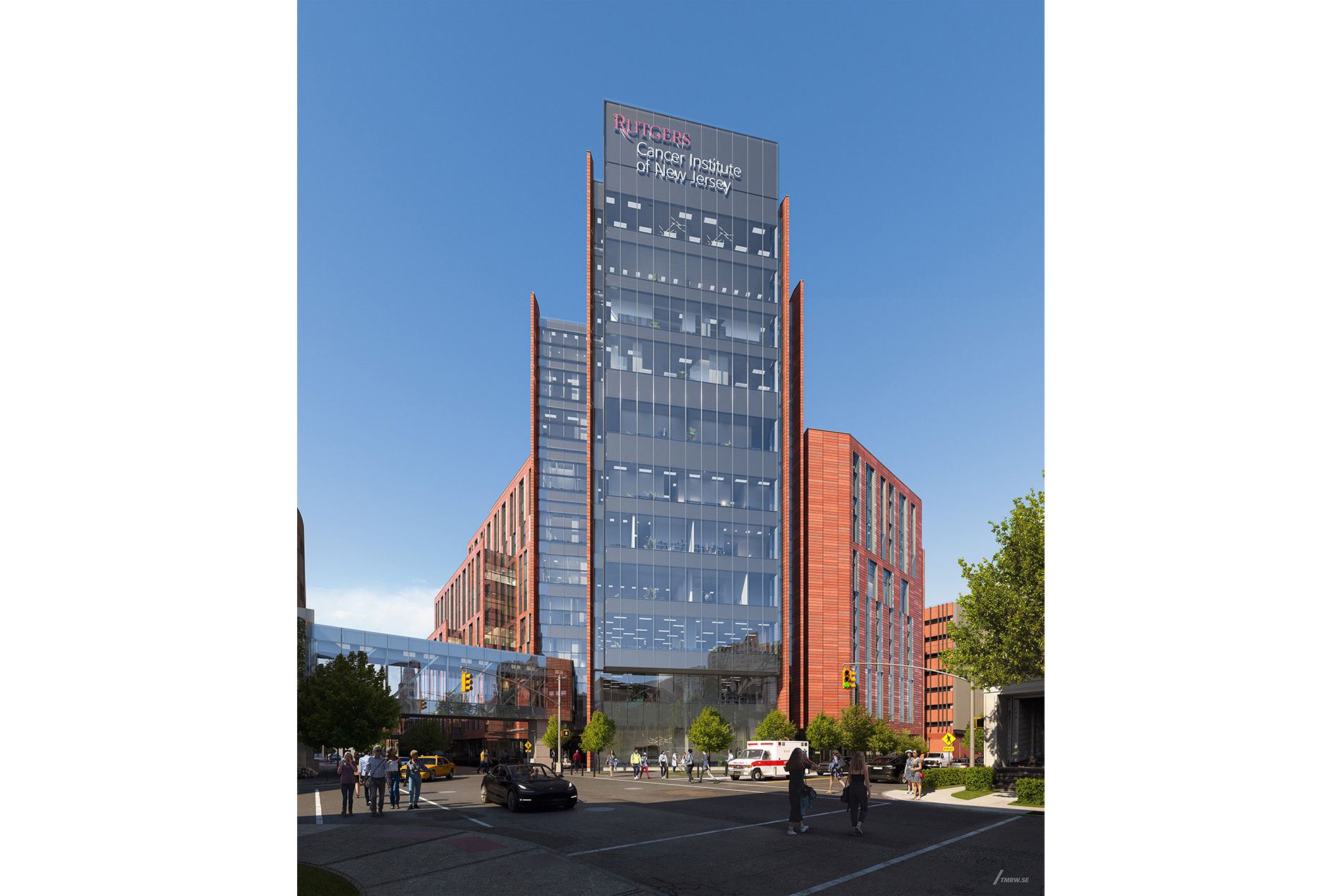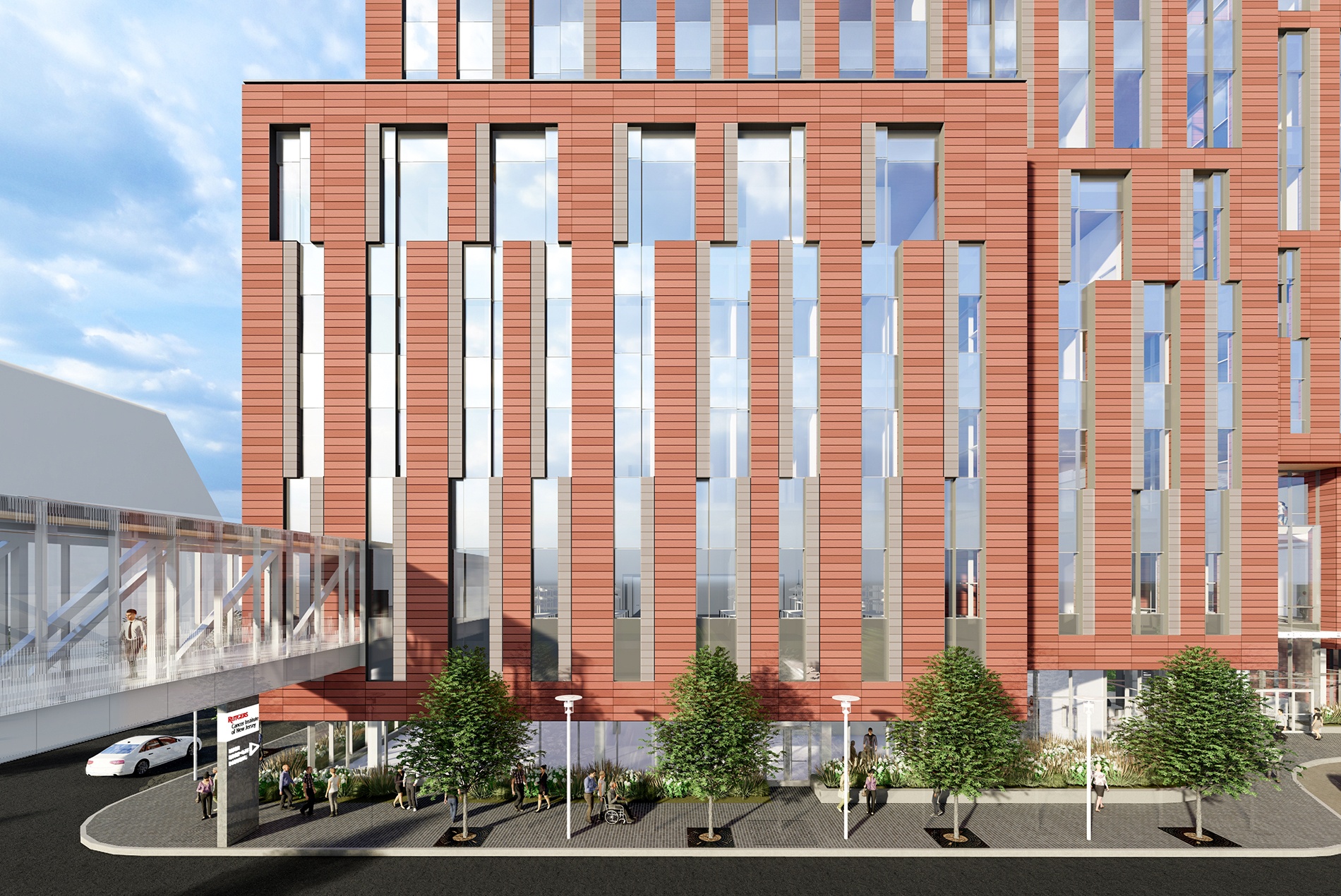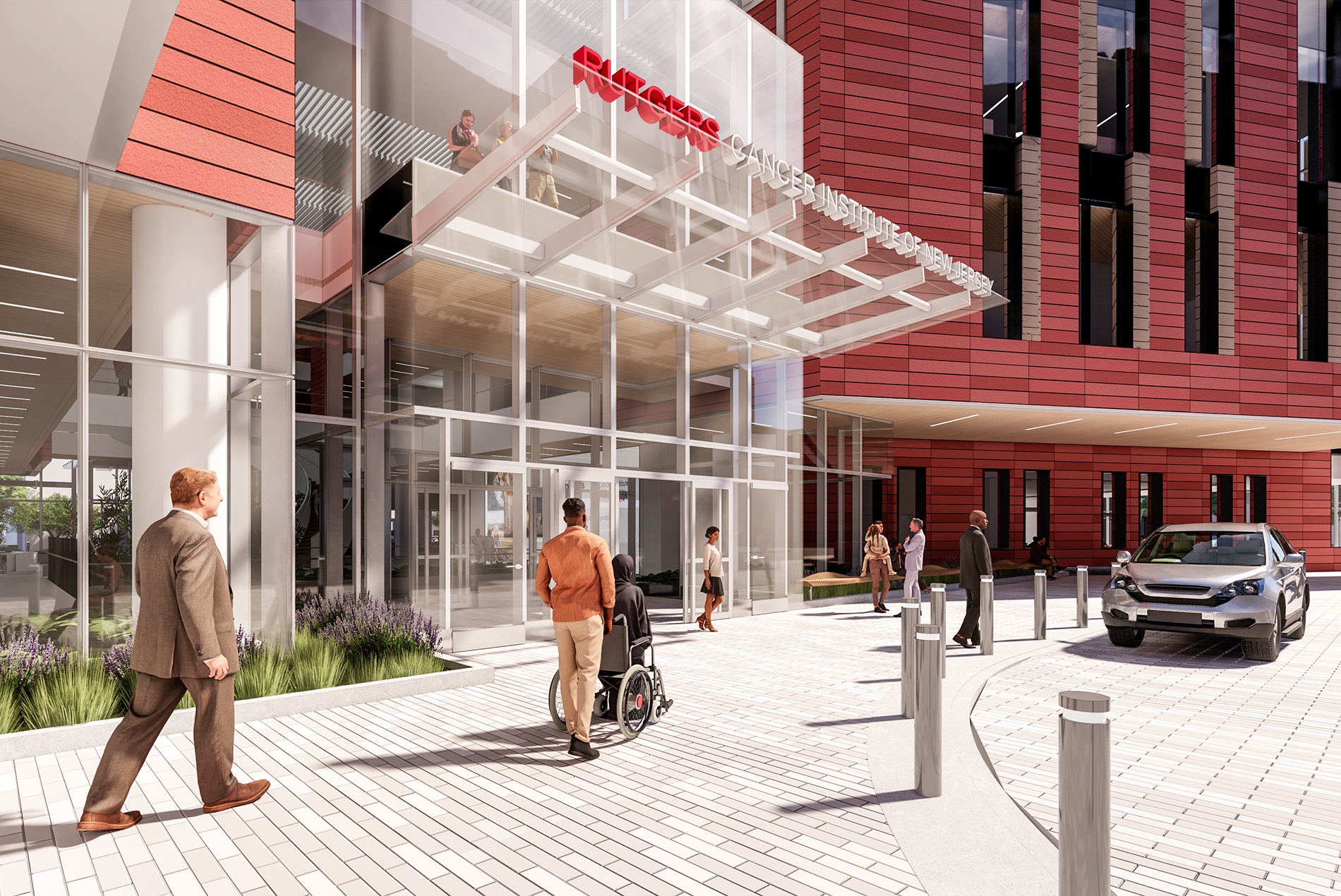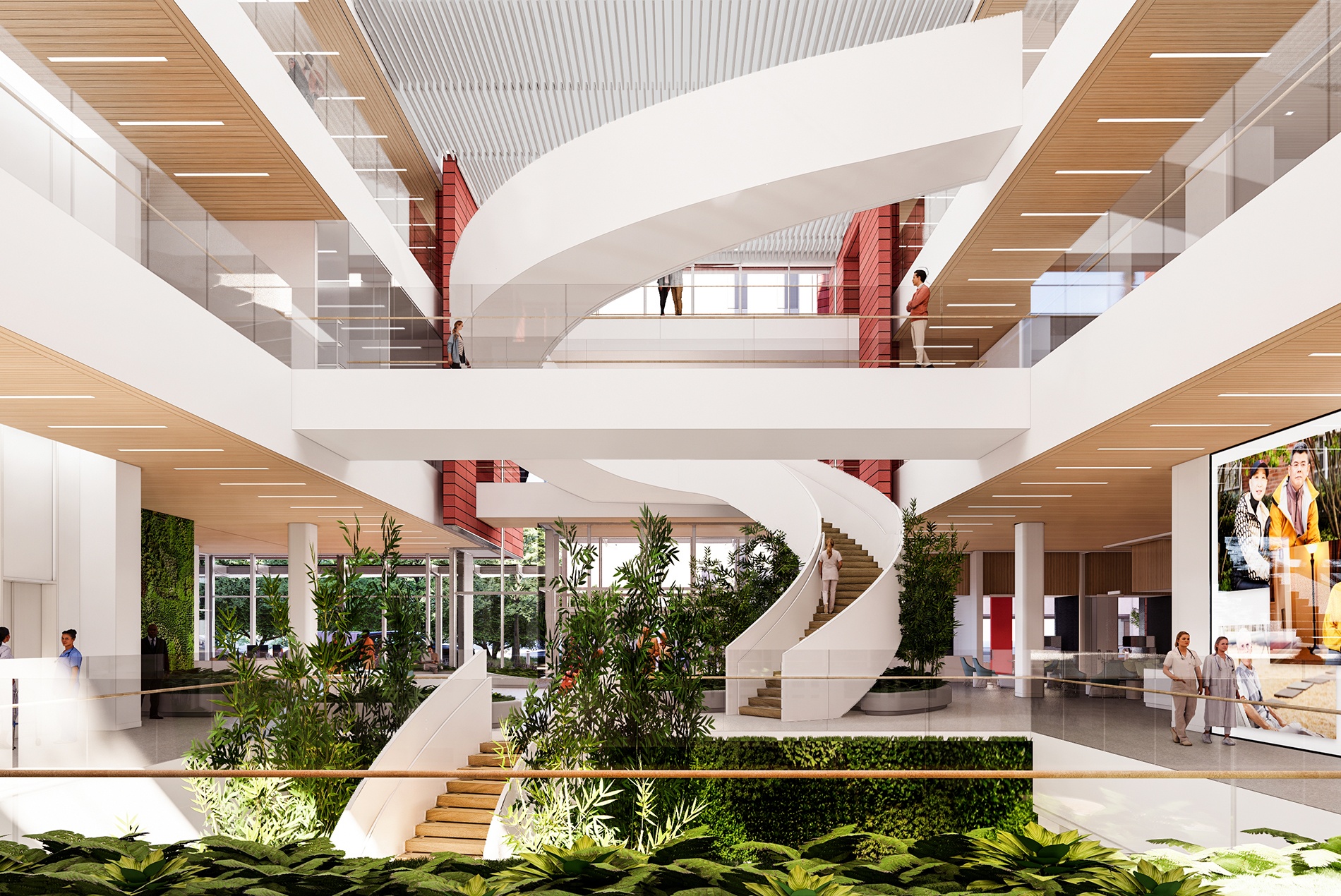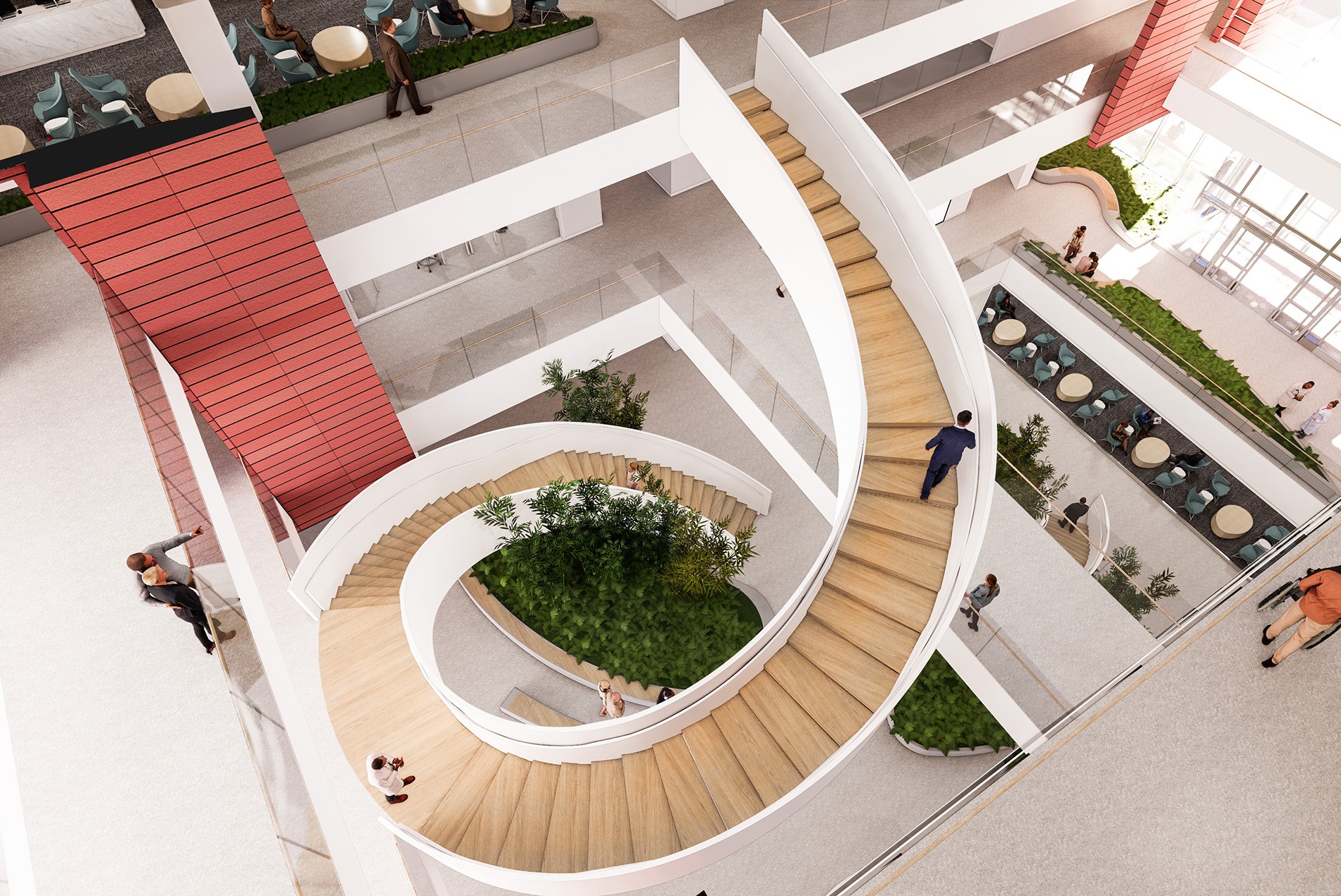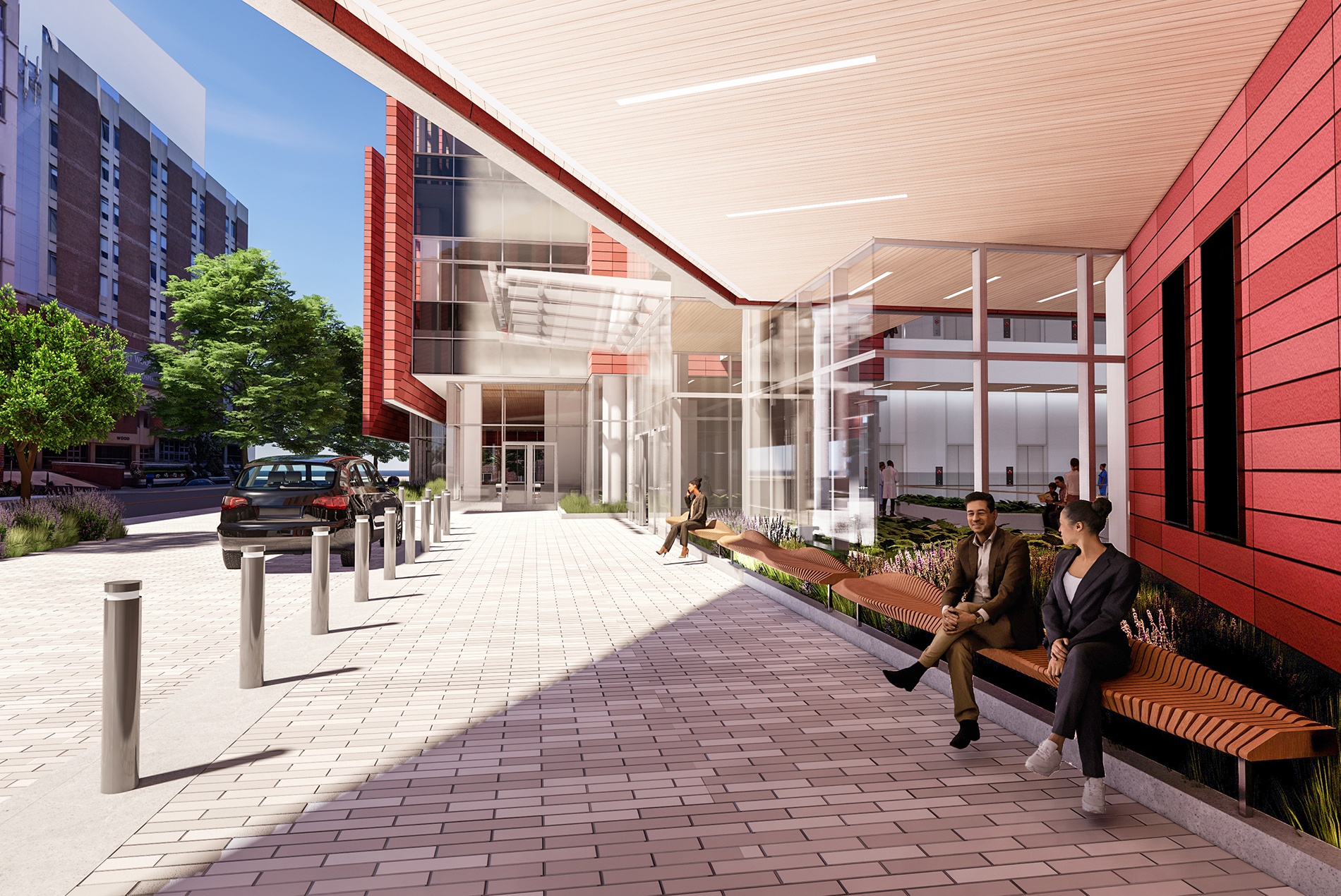RWJBarnabas and Rutgers Cancer Institute of New Jersey Cancer Pavilion
New Jersey’s first comprehensive care center will improve the patient experience at every stage of treatment while promoting groundbreaking research.
The building program includes three primary space types: outpatient care, inpatient care and research.
Outpatient care spaces include 84 infusion bays, 74 exam rooms, advanced radiology, diagnostic equipment, pharmacy facilities and urgent care.
Inpatient care offerings include 96 inpatient beds across three floors, a dedicated floor for surgeries and procedures, a sterile processing area and inpatient support spaces.
The building’s second floor is largely dedicated to research activities. The research labs focus on stem cell and molecular biology and share core facilities located in existing buildings. To accelerate the delivery of leading cancer therapies and treatment, the space also includes clinical trial labs and faculty offices.
Lab facilities, which put “science on display” with visibility to patients and visitors, can support up to 10 research teams. The team designed the labs with as much openness as possible, fostering collaboration and flexibility while creating a bright, comfortable environment. In response to the COVID-19 pandemic, the design of both the labs and adjacent technician workstations allows for physical distancing.
A four-story atrium lobby spanning the depth of the building serves as the town square. Ample natural light and lush native plantings create a welcoming, biophilic environment that enhances the well-being of patients, visitors, clinicians and staff. To promote interaction and access to shared facilities, a bridge connects the new cancer pavilion to the existing Cancer Institute and Robert Wood Johnson University Hospital.
HOK’s design responds to the character of the existing RWJBarnabas campus buildings while accommodating diverse clinical and research programming. Different uses are expressed as distinct patterns on the building’s terra-cotta facade.
